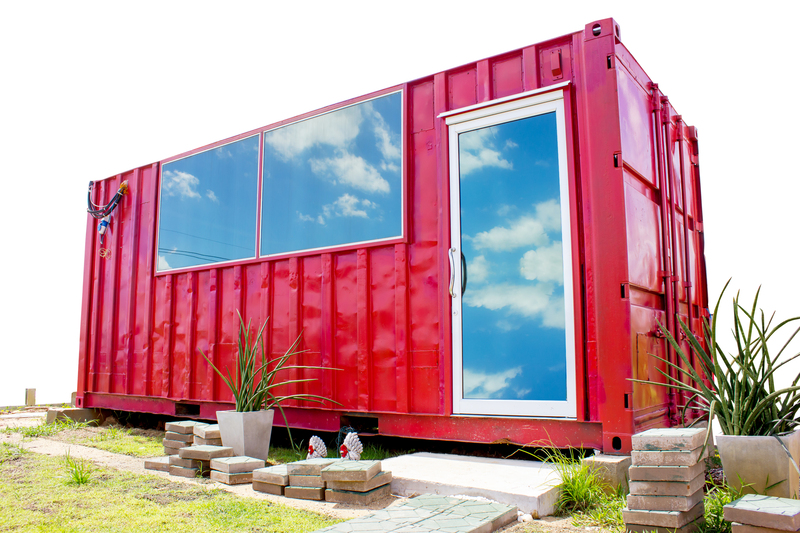Community Strategies for Responsible PPE Waste Management
The COVID-19 pandemic highlighted a new form of environmental challenge -- the surge in Personal Protective Equipment (PPE) waste. Masks, gloves, gowns, and face shields became essential, but so did the threat of mismanaged PPE litter across communities and ecosystems. As societies adapt to a post-pandemic reality, responsible PPE waste management must remain a priority. This article explores comprehensive, community-driven strategies to ensure PPE does not contribute to environmental harm, providing actionable steps, real-world examples, and practical insights for community members, leaders, and local organizations.

Why Responsible PPE Waste Management Is Critical
Since 2020, billions of single-use masks and gloves have been manufactured, most ending as waste within hours of use. Unlike typical trash, PPE is often made from plastics and can pose dangers:
- Non-biodegradable components: Most PPE is made from polypropylene and other plastics.
- Potential biohazards: Used PPE can contain pathogens, contaminating waste workers and the environment.
- Wildlife risks: Discarded masks and gloves entangle animals and pollute water bodies.
- Public nuisance: Littered PPE degrades public spaces and community aesthetics.
By adopting community PPE waste management solutions, cities, towns, and neighborhoods can turn a new environmental risk into an opportunity for greener habits and healthier living.
Education & Awareness: The First Line of Defense
Targeted Communication Campaigns
One of the most effective PPE waste reduction strategies is raising public awareness. Many community members care about the environment but don't understand the risks of improper PPE disposal or are unsure how to handle it safely.
- Visual Campaigns: Install posters and digital signs showing correct PPE disposal and its environmental importance.
- Social Media Drives: Use neighborhood groups, local government pages, and influencers to spread messages about responsible PPE waste management.
- Workshops & School Programs: Educate students, parents, and teachers through online/offline sessions focusing on both health and environmental impacts.
When communities are informed and engaged, PPE waste management transitions from a regulatory task to a shared social value.
Infrastructure Improvements: Making Safe Disposal Easy
Designated PPE Collection Points
Most inappropriate PPE disposal happens when convenient, safe bins are unavailable. Proactive communities can remedy this by introducing specially labeled PPE waste containers.
- Install bright, visible PPE waste bins: Place in high-traffic areas--outside supermarkets, public transport stops, clinics, and offices.
- Location mapping: Publish maps and apps pinpointing every PPE collection site in the area.
- Frequent servicing: Schedule PPE bin emptying to prevent overflows, which can deter usage.
Protecting Waste Handlers
Communities must ensure that those tasked with collecting and sorting PPE waste are not put at risk.
- Provide PPE to waste workers: Gloves, masks, and face shields should be mandatory for waste handlers.
- Special training: Conduct sessions on safe PPE collection, transport, and storage.
- Utilize sealed bags/liners: Encourage double-bagging or sealed containers for all medical or PPE waste.
Recycling and Innovative Collection Approaches
Pioneering PPE Recycling Programs
Though not all PPE is recyclable through regular municipal services, new models are emerging. Some manufacturers (like mask producers) and waste management firms have launched pilot projects turning used PPE into construction materials, plastic pellets, or even energy.
- PPE-specific recycling: Community partnerships with companies specializing in polypropylene recycling can divert waste from landfill.
- Collection drives: Organize periodic collection events for used masks, gloves, and face shields to ensure they reach proper recycling channels.
- Upcycling initiatives: Creative community groups have found ways to repurpose clean PPE or packaging into art projects or building materials (when sterilized and safe).
Success Story: In several European and Asian cities, pilot schemes have successfully recycled used masks into paving bricks--showcasing what's possible with creativity and cooperation.
Waste-to-Energy Solutions
Some communities, particularly those with access to high-temperature incineration, are exploring PPE waste-to-energy programs. While not a universal solution, it can reduce reliance on landfills.
- Invest in modern incinerators: These must meet strict emission standards to avoid air pollution.
- Set up community drop-off centers: Allow residents to dispose of PPE at centralized facilities for energy conversion.
Regulatory & Policy Support
Community-Driven Policy Recommendations
Policy frameworks created with community participation stand a much higher chance of adoption and compliance. Proactive steps include:
- Mandatory PPE bins: Local governments can legislate the placement of PPE-specific disposal points at entrances of commercial, educational, and medical establishments.
- Civic incentives: Businesses and schools that demonstrate exemplary PPE waste management can be recognized or rewarded.
- Fines for littering PPE: Enforce penalties for improper PPE disposal, paired with information campaigns so people understand the reason behind the law.
- Data transparency: Report local PPE waste figures and recycling rates, motivating further community action.
Tip: Policy should always be paired with *practical support* -- such as providing collection materials or funding community education initiatives -- to ensure effectiveness and fairness.
Community Engagement: Empowering Local Involvement
Volunteer Teams & Local Leadership
*Grassroots involvement* is the foundation of successful personal protective equipment disposal programs. Community champions and neighborhood groups foster a sense of ownership and cooperation.
- Form cleanup squads: Mobilize volunteers (with appropriate protective gear) for regular sweeps of public spaces.
- PPE waste ambassadors: Train local leaders or students to advocate for responsible waste practices and share proper disposal methods in their social circles.
- Local hackathons: Stimulate tech-savvy residents to invent solutions, such as PPE disposal tracking apps or creative recycling methods.
School and Youth Initiatives
Engaging young people ensures the longevity of responsible PPE waste habits. Schools can:
- Host PPE recycling art contests: Students use (sanitized) PPE waste to create awareness-raising art.
- Science projects: Study the environmental impact of PPE in local waterways or public areas, reporting findings to local authorities.
- Youth-led social media campaigns: Young ambassadors can create viral videos on the right way to dispose of masks and gloves.
Innovative Technologies for PPE Tracking and Reduction
Smart Bins and Collection Monitoring
Smart waste bins, equipped with sensors and location trackers, notify sanitation workers when nearly full and collect valuable data on PPE waste patterns. This allows:
- Data-driven scheduling: Optimize bin emptying and placement for maximum convenience and safety.
- Behavioral feedback: Maps and apps can show residents how their proper PPE disposal is making a real difference.
PPE Reduction Innovation
Communities can also reduce PPE waste through:
- Reusable PPE: Encourage washable fabric masks and gloves where appropriate (for non-medical, non-hazardous use sectors).
- Bulk PPE donations: Community drives for collecting new, surplus PPE for vulnerable groups can prevent over-purchasing and waste.
- Business partnerships: Collaborate with local suppliers for take-back schemes or incentives for customers who return used PPE for safe disposal.
Addressing Challenges and Overcoming Barriers
- Lack of Awareness:
Solution: Persistent, multi-channel communication using schools, influencers, and community events. - Limited Funding:
Solution: Apply for grants, crowdsource, or partner with local businesses for shared disposal costs and initiatives. - Health Concerns:
Solution: Ensure all collection actions meet public health guidelines; always equip collectors with certifications and PPE. - Infrastructure Gaps:
Solution: Start with key hot spots, then continually expand bin placement as engagement and funding increase. - Recycling Limitations:
Solution: Research and ask for support from innovation hubs or universities to improve local recycling technologies.
Where Can Communities Start?
1. Organize a PPE Waste Audit
Gather a group to survey local public spaces for PPE litter and usage. Estimate sources and "hot spots."
2. Build Partnerships and Leverage Local Assets
Approach local hospitals, pharmacies, supermarkets, and environmental clubs. Use existing networks for PPE collection, disposal, and awareness initiatives.
3. Pilot a Micro-Initiative
Even a single bin or awareness poster can inspire broader change. Start small, measure outcomes, and expand iteratively.
4. Advocate for Policy Updates
Write to local representatives about the need for PPE bins, recycling solutions, and public education. Share data from your audits and initiatives.

Case Studies: Global Examples of Community PPE Waste Strategies
Case Study 1: The Philippines' Plastic Bank Initiative
In Manila and Cebu, community members collect used PPE to exchange for tokens that can be traded for groceries, creating both an environmental and economic incentive for responsible PPE waste segregation.
Case Study 2: France's Mask Upcycling Pilot
Several French towns collaborated with startups to collect disposable masks and convert them into road-building materials -- a circular solution that kept masks out of landfill while improving public infrastructure.
Case Study 3: US School District PPE Competitions
School districts in California ran inter-school PPE collection and art competitions, combining environmental education with friendly rivalry. Participants reported a 40% drop in mask litter on school grounds.
Conclusion: Towards a Greener, Safer Future
The surge in PPE use has complicated community waste management efforts, but also provided a unique window to improve environmental stewardship, public health, and social cooperation. Whether through education, infrastructure, recycling, policy, technological innovation, or volunteer action, every community can play a lead role in shaping responsible PPE waste management practices.
By embracing these strategies, communities will:
- Protect public health by containing possible contaminants
- Safeguard wildlife and reduce plastic pollution
- Enhance the beauty and cleanliness of shared spaces
- Promote a culture of environmental responsibility and civic pride
The challenge of PPE waste is far from over, but with proactive, community-based solutions, we can turn it into an opportunity for positive change.
If your community has already adopted a unique PPE waste solution, share your story--let those strategies inspire others! Together, we can make PPE waste management both responsible and sustainable.